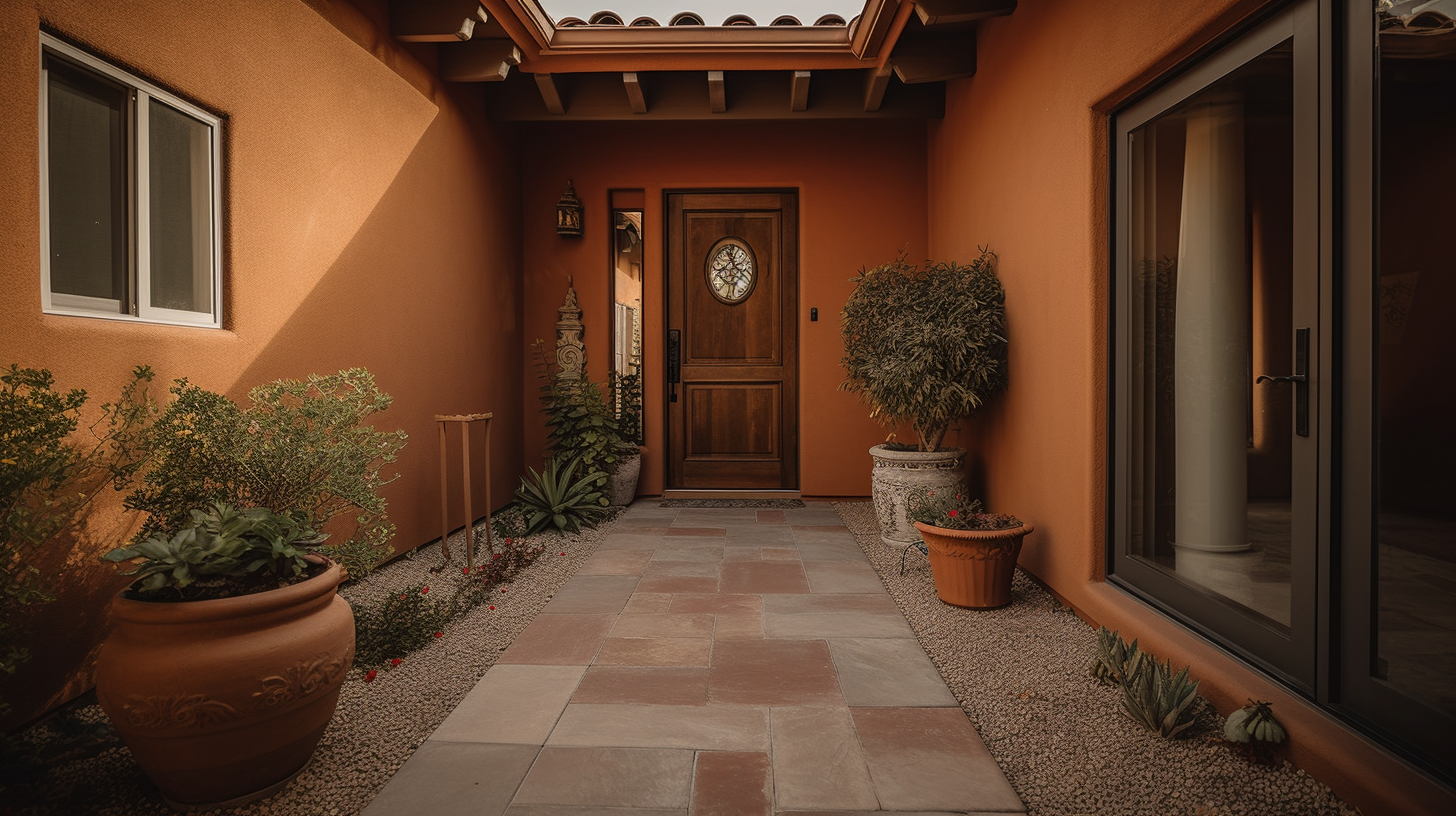
Stucco Coatings: Compare Latex Paint vs. Tex Cote Coolwall
Choosing between stucco coatings for your home can be a challenging decision. With many options available, it can be difficult to decide which exterior painting options is best for you. In this article, we will explore two popular choices – latex paint and Tex-Cote Coolwall – and help you determine which one is better suited for your stucco needs.
What is Stucco?
Stucco is a popular exterior finish made from a mixture of sand, cement, and water. It’s been used for centuries because of its durability, versatility, and unique aesthetic appeal. Stucco can be applied to a variety of surfaces, including wood, brick, and concrete, and can be customized with different textures and colors.
Painting Stucco: Latex Paint
Latex paint is a popular choice for stucco coatings. It’s made from a water-based solution, making it easy to apply and clean up. Latex paint comes in a variety of colors and finishes, allowing you to customize the look of your stucco.
Pros of Latex Paint
- Water-based, making it environmentally friendly and easy to clean up
- Dries quickly
- Available in many colors and finishes
- Resistant to chipping and peeling
Cons of Latex Paint
- Not as durable as other options
- May require multiple coats for full coverage
- May not adhere well to stucco in certain climates or conditions
Alternative for Stucco: Textured Coating Coolwall
Textured Coating is a high-performance stucco coating system specifically designed for stucco surfaces, called Coolwall. It offers many benefits over traditional latex paint, including increased durability and energy efficiency.
Pros of Tex Cote Coolwall
- Highly durable and long-lasting
- Reflects solar heat, reducing energy costs
- Resistant to fading, chipping, and peeling
- Low maintenance
Cons of Tex Cote Coolwall
- More expensive than latex paint
- Limited color options
- Requires professional application
Comparing Latex Paint and Tex Cote Coolwall
To help you decide which option is best for your stucco, let’s compare the two in terms of energy efficiency, durability, weather resistance, maintenance, aesthetics, and cost.
Energy Efficiency
Tex Cote Coolwall is specifically designed to reflect solar heat, making it more energy-efficient than latex paint. This can help you save on energy costs by keeping your home cooler during hot months.
Durability
Tex Cote Coolwall is more durable than latex paint, making it a better choice for long-lasting protection. It’s resistant to chipping, peeling, and fading, ensuring that your stucco will maintain its appearance for years to come.
Weather Resistance
Both latex paint and Tex Cote Coolwall provide a degree of weather resistance. However, Tex Cote Coolwall is specially formulated to withstand extreme weather conditions, making it a better option for those living in areas with harsh climates or frequent temperature fluctuations.
Maintenance
Latex paint may require more frequent touch-ups and maintenance, as it’s not as durable as Tex Cote Coolwall. With Tex Cote Coolwall, you’ll have a low-maintenance coating that retains its appearance with minimal effort.
Aesthetics
Latex paint offers a wider range of colors and finishes, allowing for more customization when it comes to the appearance of your stucco. Tex Cote Coolwall has fewer color options but provides a consistent and high-quality finish.
Cost
Latex paint is generally less expensive upfront than Tex Cote Coolwall. However, the long-term durability and energy savings provided by Tex-Cote Coolwall may offset the higher initial cost over time.
Making the Decision
Ultimately, the decision between latex paint and Tex Cote Coolwall will depend on your specific needs and preferences. If you’re looking for a budget-friendly option with more color choices, latex paint may be the way to go. However, if you want a durable, energy-efficient, and low-maintenance solution, Tex Cote Coolwall may be the better choice.
Conclusion
Both latex paint and Tex Cote Coolwall have their pros and cons when it comes to stucco coatings. By considering factors such as energy efficiency, durability, weather resistance, maintenance, aesthetics, and cost, you can make an informed decision about which option is best suited for your stucco needs. Remember, your choice will impact your home’s appearance, comfort, and energy efficiency for years to come, so take the time to weigh your options carefully.
FAQs
- Can I apply Tex Cote Coolwall myself? Tex Cote Coolwall requires professional application to ensure proper adhesion and performance. It’s best to hire a certified Coolwall installer for the job.
- How often will I need to repaint my stucco with latex paint? The frequency of repainting will depend on factors such as climate, exposure, and paint quality. Generally, latex paint may need to be reapplied every 5-10 years.
- Do I need to use a primer before applying latex paint to stucco? Using a primer is recommended to ensure proper adhesion and coverage. Check with the paint manufacturer for specific recommendations.
- Can Tex Cote Coolwall be applied to other surfaces besides stucco? Tex Cote Coolwall is primarily designed for stucco surfaces, but it may also be suitable for other masonry surfaces. Consult with a professional contractor for specific recommendations.
- How long does it take for Tex Cote Coolwall to dry? The drying time for Tex Cote Coolwall will depend on factors such as temperature and humidity. Generally, it takes about 24 hours for the coating to fully cure.
Ready to transform your stucco with a durable, energy-efficient coating? Tidal Remodeling can help. Request a free estimate today and discover how our experts can enhance the beauty and performance of your home’s exterior. Schedule your exterior painting estimate today!



